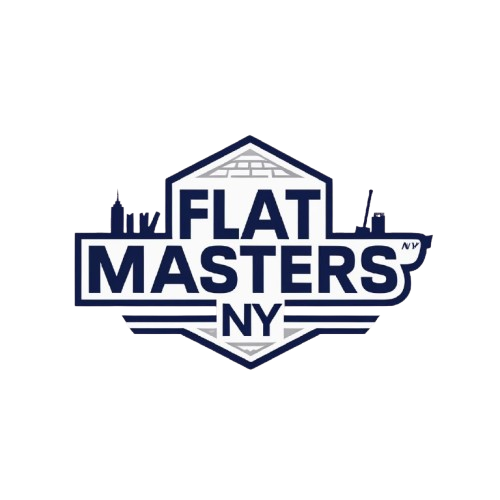How to Raise a Flat Roof: 5 Essential Steps for Homeowners
After twenty-three years of flat roof work in Queens, I've seen every possible reason homeowners need to raise their roof height. Maybe you're adding HVAC equipment, dealing with chronic ponding issues, or your neighbor's new three-story construction is making your building look like it's sinking into the ground. Whatever the reason, raising a flat roof typically costs between $15,000 to $45,000 depending on the size and complexity of your project.
The price breakdown usually looks like this: structural modifications run about $8-12 per square foot, new roofing membrane costs $6-10 per square foot, and professional labor adds another $15-20 per square foot. That's before we talk about permits, which in Queens can add another $2,000-5,000 to your total.
Understanding Roof Height Modification Basics
Let's be clear about what we're actually doing when we talk about how to raise a flat roof. We're not just slapping some wood on top and calling it a day. This is serious structural work that requires engineering, permits, and skilled contractors who know what they're doing. I've seen too many DIY disasters where homeowners thought they could wing it.
The process involves either building up the existing structure or completely replacing the roof deck at a higher elevation. Sometimes we can work with what's there, other times we need to start fresh. It depends on your building's current condition, load-bearing capacity, and what you're trying to achieve.
Project Timeline Breakdown
Week 1-2: Permits & Planning (15%)
Week 3-6: Structural Work (40%)
Week 7-9: Roofing Installation (30%)
Week 10-11: Final Inspections (15%)
Step 1: Get a Structural Engineer's Assessment
This isn't optional. Your building needs to handle the additional load, and you need someone with a PE license to tell you exactly what modifications are required. In Queens, I work with three different structural engineers depending on the project scope. A basic assessment costs around $1,500-3,000, but it's the cheapest insurance you'll ever buy.
The engineer will examine your existing joists, beams, and foundation to determine load capacity. They'll also factor in snow loads, which in New York can be significant. Most older buildings in Astoria and Long Island City weren't designed for modern rooftop equipment, so reinforcement is usually necessary.
Step 2: Secure Proper Permits and Approvals
Queens building department doesn't mess around with roof modifications. You'll need an Alt-2 permit for major structural changes, which requires sealed drawings from both an architect and engineer. The process takes 6-8 weeks minimum, sometimes longer if your building has landmark status or other complications.
Here's what you're looking at permit-wise: filing fees start at $1,200, plan examination runs another $800-1,500, and inspection fees add up to about $500-800. If you're in a co-op or condo, add another month for board approval.
Step 3: Remove Existing Roofing Materials
This is where it gets messy. We strip everything down to the deck - membrane, insulation, the works. On a typical 1,200 square foot roof in Elmhurst, we usually pull off 8-12 tons of material. That's a lot of dumpsters.
Sometimes we discover problems that weren't visible from the surface. Rotted decking, corroded fasteners, moisture damage in the structure below. Budget an extra 10-15% for surprises because they always happen.
The removal process takes 2-3 days depending on how many layers we're dealing with. Some buildings in Queens have five or six roof systems built on top of each other over the decades. It's like archaeological excavation, but with more tar and fewer artifacts.
Step 4: Build Up the Roof Structure
Now we get to the real work. Depending on your engineer's specifications, we might be adding new joists, installing a completely new deck system, or building a raised framework. This is precision carpentry work that requires experienced framers.
We typically use engineered lumber for the new structure - LVL beams and engineered joists that can handle the loads without the size limitations of dimensional lumber. The new deck goes on top, usually 5/8" plywood or OSB depending on the membrane system we're installing.
| Structural Method | Cost per Sq Ft | Timeline | Best For |
|---|---|---|---|
| Joist Addition | $8-12 | 2-3 weeks | Minimal height increase |
| New Deck System | $12-18 | 3-4 weeks | Moderate height increase |
| Complete Rebuild | $18-25 | 4-6 weeks | Significant height increase |
Step 5: Install New Roofing System
With the structure complete, we move on to the roofing installation. For flat roofs in Queens, I typically recommend either EPDM or TPO membrane systems. EPDM costs less upfront but TPO offers better energy efficiency and longer warranties.
The installation process starts with proper insulation - usually polyiso boards that give us both thermal performance and a stable base for the membrane. We mechanically fasten everything according to wind uplift requirements, which in coastal Queens can be pretty demanding.
Flashing details around penetrations and edges require special attention when you've raised the roof height. All the existing flashings need to be extended or replaced to accommodate the new elevation. This is where a lot of contractors cut corners, but it's also where most leaks develop later.
Common Challenges and Solutions
Every roof height modification project in Queens comes with its own set of headaches. Building access is usually problem number one - getting materials and equipment to a rooftop in a dense neighborhood isn't simple. We often need street permits for crane access or special arrangements with neighboring buildings.
Weather delays are inevitable. You can't install roofing in rain, and wind speeds above 25 mph make it unsafe to work. Spring and fall are the best seasons, but even then you're looking at potential delays.
The biggest mistake I see homeowners make is trying to save money by hiring the lowest bidder. This isn't siding work or interior painting. A structural roof modification done wrong can cause catastrophic failure. I've been called in to fix botched jobs that ended up costing three times what they should have originally.
Code Requirements and Safety Considerations
New York building code has specific requirements for roof height modifications that go beyond basic structural concerns. Fire department access, egress requirements, and height restrictions all factor into what you can actually do.
In most residential areas of Queens, you're limited to 35 feet total building height. Commercial districts have different rules, but you still need to account for setback requirements and lot coverage restrictions.
Safety during construction is my responsibility, not yours, but you need to understand what's involved. We're working with heavy equipment at elevation, often in tight spaces. Professional contractors carry comprehensive insurance and follow OSHA safety protocols. Weekend warriors don't.
When to Call Flat Masters NY
Look, I'm not going to tell you this is a DIY project because it's not. But I'm also not going to scare you away from a legitimate need to raise your roof height. If you're dealing with drainage problems that can't be solved with slope adjustments, or you need the space for mechanical equipment, or your building just needs to compete visually with the neighborhood, roof height modification might be the right solution.
We handle the entire process from initial assessment through final inspection. Our structural engineer relationships mean faster permitting, and our crews know how to work efficiently in Queens' challenging conditions. Most importantly, we warranty our work and we'll be here to service it.
The investment is substantial, but done right, it solves problems permanently and adds real value to your property. Done wrong, it creates expensive headaches that last for years.
Call us at (917) 994-7618 for a free consultation. We'll tell you honestly whether raising your roof makes sense for your situation, or if there's a better solution you haven't considered.

